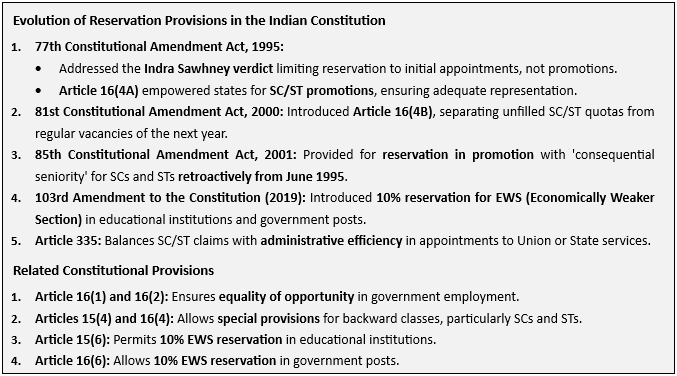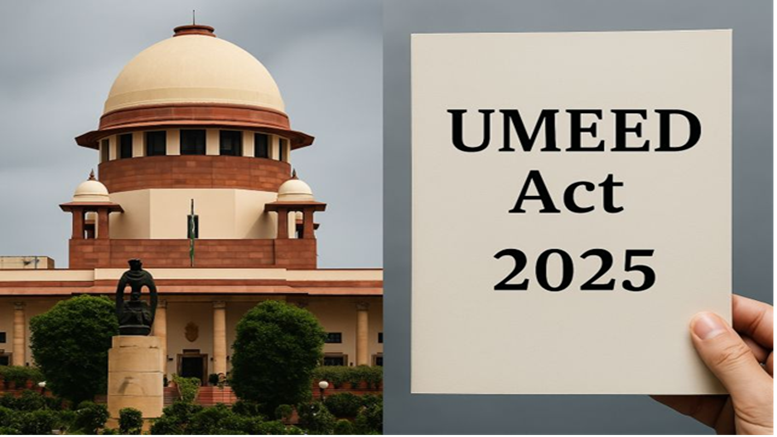- Courses
- GS Full Course 1 Year
- GS Full Course 2 Year
- GS Full Course 3 Year
- GS Full Course Till Selection
- Online Program
- GS Recorded Course
- NCERT (Recorded 500+ Hours)
- Polity Recorded Course
- Geography Recorded Course
- Economy Recorded Course
- AMAC Recorded Course
- Modern India, Post Independence & World History
- Environment Recoded Course
- Governance Recoded Course
- Science & Tech. Recoded Course
- International Relations and Internal Security Recorded Course
- Disaster Management Module Course
- Ethics Recoded Course
- Essay Recoded Course
- Current Affairs Recoded Course
- CSAT
- 5 LAYERED ARJUNA Mentorship
- Public Administration Optional
- ABOUT US
- OUR TOPPERS
- TEST SERIES
- FREE STUDY MATERIAL
- VIDEOS
- CONTACT US
Bihar Reservation Act
Bihar Reservation Act
13-12-2023
Context
- In December 2023, the Bihar Assembly passed new Reservation Laws, raising the reservations in jobs and education to 75%, surpassing the Supreme Court's prescribed 50% limit
- The 50% limit prescribed in the Mandal Commission case (Indra Sawhney, 1992).
Key Highlights
- The two laws are:
- Bihar Reservation of Vacancies in Posts and Services (for Scheduled Castes, Scheduled Tribes, and Other Backward Classes) Amendment Act-2023 and
- Bihar (in admission in educational institutions) Reservation Amendment Act, 2023.
- Revised reservations include 20% for Scheduled Castes, 2% for Scheduled Tribes, 18% for Backward Classes, 25% for Extremely Backward Classes, and 10% for economically weaker general category (EWS).
Understanding the 50% Rule
- Historical principle limiting reservations to 50% of total seats or positions.
- Originated from the 1963 M.R. In The Balaji case, viewing reservations as an "exception" under the constitutional framework.
- Evolution in 1976 recognized reservations as a component of equality but retained the 50% cap.
- The Mandal commission case in 1990 reaffirmed the binding 50% limit, with exceptions for specific circumstances, particularly for marginalized communities.
Recent Developments and Exceptions
- Additional 10% EWS reservation validated by the Supreme Court under the 103rd Constitutional Amendment.
- The 50% limit applies only to non-EWS reservations, allowing States to reserve up to 60% of seats/posts including EWS reservations.
Other States Crossing the Limit
- States like Chhattisgarh (72%), Tamil Nadu (69%), and several northeastern States (Arunachal Pradesh, Meghalaya, Mizoram, Nagaland - 80% each) have exceeded the 50% limit.
- Lakshadweep has 100% reservations for Scheduled Tribes.
- Previous attempts by Maharashtra and Rajasthan to breach the limit were struck down by the courts.

Issues Surrounding Reservation Policies
- Caste-based Mobilization: Risk of political parties exploiting slogans for specific caste-based mobilization.
- Formation of Caste Identities: Concerns about reservation increases leading to further popularization of caste identities and a fragmented polity.
- Exploitation for Electoral Politics: Potential for exploitation by individuals, political parties, or groups with vested interests for electoral gains.
- Challenges in Defining OBCs: Administrative category OBCs require sub-categorization, posing challenges and conceptual ambiguities.
- Political and Social Implications: Sub-categorization may trigger political debates and implications on the inclusion of specific castes.
Way Forward
- Revaluation of 50% Cap: Courts to reassess the 50% reservation cap, considering evolving social dynamics and the changing socio-economic landscape.
- Broader Criteria for Exceptions: Explore expanding exceptions beyond social exclusion, considering broader criteria for historically disadvantaged communities, irrespective of geography.
- Review of Existing Policies: Conduct a detailed review of existing reservation policies to assess effectiveness, impact, and alignment with current societal needs.
Conclusion
Revisiting reservation ceilings is essential to enhance the socio-economic conditions of marginalized communities. Striking a balance between inclusivity and administrative efficiency is crucial for crafting effective and equitable reservation policies.

![img-PSYCHOLOGICAL WARFARE [PSYWAR]](https://i.filecdn.in/755esias/PSYCHOLOGICALWARFAREPSYWAR-1747206772505.jpg)

